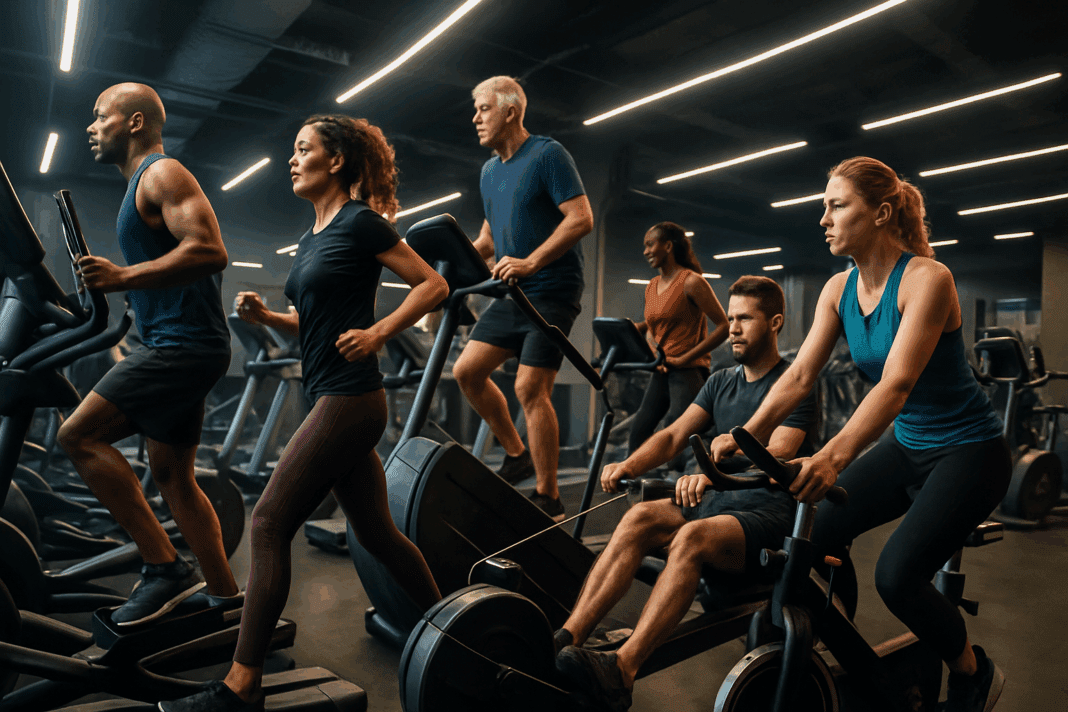Unlocking Endurance: The Modern Athlete’s Advantage
In the realm of athletic training and physical conditioning, endurance is no longer just a desirable trait—it is a foundational pillar for optimal performance. Whether preparing for a marathon, improving athletic performance, or simply enhancing overall cardiovascular health, endurance training offers both physiological and psychological benefits that cannot be overstated. As fitness methodologies evolve, gym cardio workout plans have embraced a new era defined by accessibility, precision, and personalization—largely thanks to the innovative array of cardio machine exercises now available in most modern fitness centers.
You may also like: How to Increase Stamina and Endurance Naturally: Smart Training Tips and Nutrition Habits That Support Cardiovascular Fitness
Endurance and stamina training go beyond running laps or enduring long, monotonous hours on a treadmill. Today, it means strategically engaging in targeted cardio machine exercises that maximize results while minimizing risk. Machines like ellipticals, rowers, stair climbers, spin bikes, and treadmills offer diverse movement patterns, variable intensity options, and built-in metrics that allow users to track progress in real time. When properly integrated into a comprehensive gym cardio workout plan, these tools can significantly boost endurance, burn calories efficiently, and support long-term cardiovascular and muscular health.
This article explores how cardio machine exercises serve as an indispensable component of modern training. We will examine their physiological benefits, how they can be customized to individual fitness levels, and how to structure a gym cardio workout plan that promotes stamina, strength, and sustained performance.
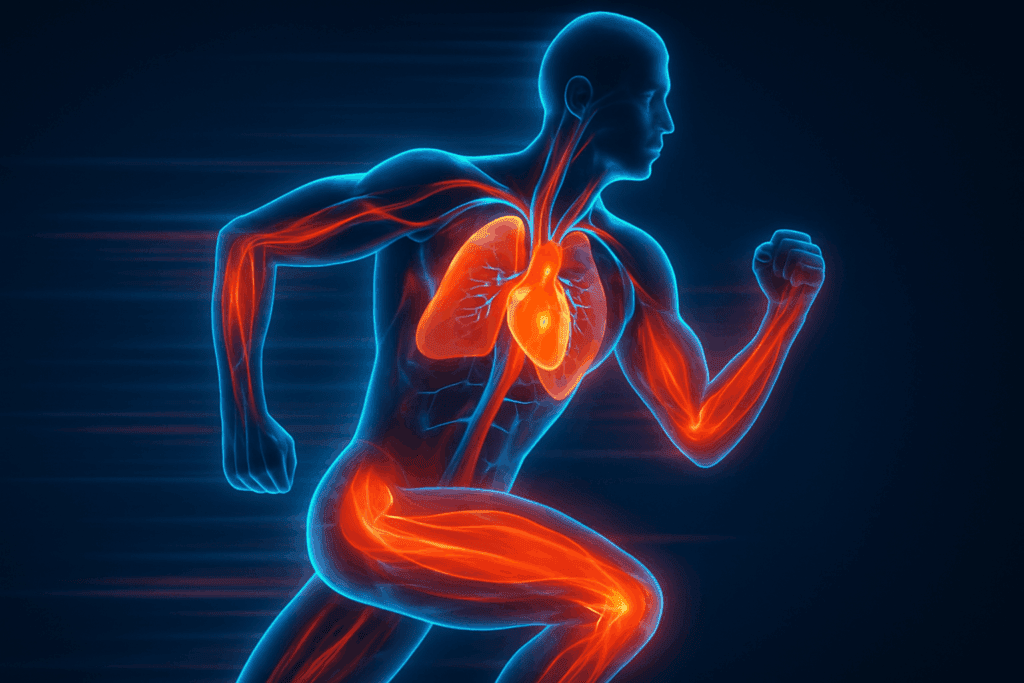
The Science Behind Endurance and Cardio Training
Before diving into specific machines and strategies, it is important to understand the science that underpins endurance. At its core, endurance refers to the body’s ability to sustain physical activity over time. It is a product of both aerobic and anaerobic capacity, muscular strength, and metabolic efficiency. Cardio machine exercises support endurance by stimulating the heart and lungs to work harder and more efficiently over time, ultimately increasing the body’s oxygen uptake (VO2 max) and delaying the onset of fatigue.
Studies show that consistent aerobic activity improves mitochondrial density and capillary growth within muscle fibers, allowing for better energy production and nutrient delivery. Moreover, endurance training helps regulate blood sugar levels, improve lipid profiles, and enhance cognitive function by increasing cerebral blood flow. In practical terms, individuals who integrate cardio machines into their routines experience a boost in daily energy, greater mental clarity, and reduced risk of chronic disease.
Importantly, these benefits are not limited to elite athletes. From college students to busy professionals, nearly anyone can reap the rewards of a well-structured gym cardio workout plan. The key lies in selecting the right machines, using them effectively, and progressing gradually.
Elliptical Trainers: Low-Impact, High-Reward Efficiency
Among the most popular cardio machines, the elliptical offers a joint-friendly yet highly effective way to build endurance. Its fluid, gliding motion minimizes impact on the knees, hips, and ankles while still providing a full-body workout that engages both upper and lower muscle groups. Because of its dual-action handles, the elliptical is especially useful for integrating arm movement and encouraging total-body coordination.
Incorporating the elliptical into a gym cardio workout plan is ideal for individuals recovering from injury or those seeking to avoid high-impact exercises. Yet its versatility also appeals to seasoned athletes looking to cross-train or introduce variety into their routines. Interval training on the elliptical, where users alternate between periods of high and moderate intensity, has been shown to effectively improve aerobic capacity while also supporting fat loss and muscle tone.
Tracking heart rate, calories burned, and resistance level enables users to tailor their sessions for specific endurance goals. Whether the aim is fat oxidation, steady-state endurance, or peak output training, the elliptical can be fine-tuned to meet precise performance objectives.
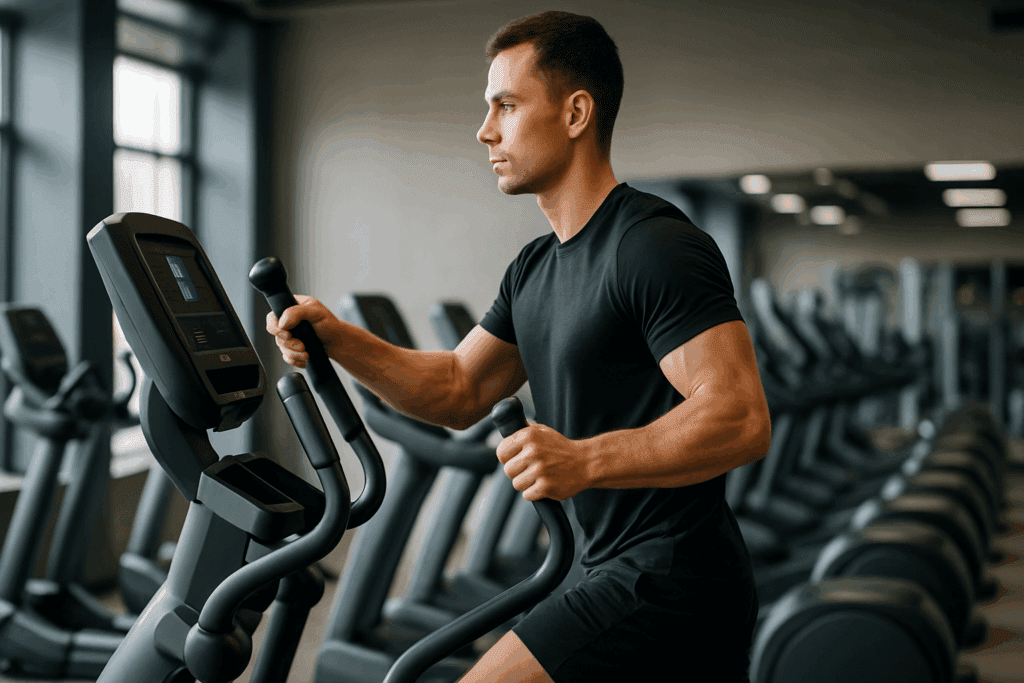
Treadmills: Classic Cardio with Advanced Customization
Despite being one of the oldest cardio machines, the treadmill remains a cornerstone in fitness facilities for good reason. Its ability to mimic natural movement while allowing for fine-tuned control over speed, incline, and duration makes it exceptionally adaptable. For individuals aiming to develop long-distance stamina, treadmills offer a convenient and consistent surface that eliminates many of the unpredictable variables associated with outdoor running.
Integrating treadmill intervals into a gym cardio workout plan helps build both speed and endurance. By incorporating hill sprints, tempo runs, and long steady-state sessions, users can effectively target different energy systems and muscle fiber types. Additionally, the incline feature allows for simulation of uphill terrain, which enhances lower body strength and cardiovascular challenge.
Advanced models often include interactive displays and virtual running environments, further increasing motivation and allowing users to simulate race-day conditions. Treadmill workouts also provide real-time feedback on cadence, stride length, and energy output—metrics that are crucial for anyone serious about optimizing their endurance strategy.

Rowing Machines: Total-Body Conditioning for Maximal Impact
Rowing machines, or ergometers, represent one of the most efficient cardio machine exercises for developing both aerobic and anaerobic endurance. Unlike many machines that focus primarily on the lower body, rowing engages approximately 86 percent of the body’s muscles in a single stroke—including the legs, core, back, and arms.
This total-body involvement makes rowing a calorie-burning powerhouse and a potent conditioning tool. For endurance athletes, rowing provides a non-impact option that builds stamina while also enhancing muscular endurance. Its rhythmic, repetitive nature supports mental focus, while its demand for posture and coordination strengthens core stability and neuromuscular control.
A gym cardio workout plan that incorporates rowing can alternate between steady-state sessions and high-intensity intervals to stimulate different adaptations. For example, 30 minutes of low-resistance rowing helps build cardiovascular endurance, while shorter, explosive bursts with higher resistance can develop power and lactic threshold tolerance. Rowing also encourages mindful breathing and pacing, which are essential skills in endurance events.
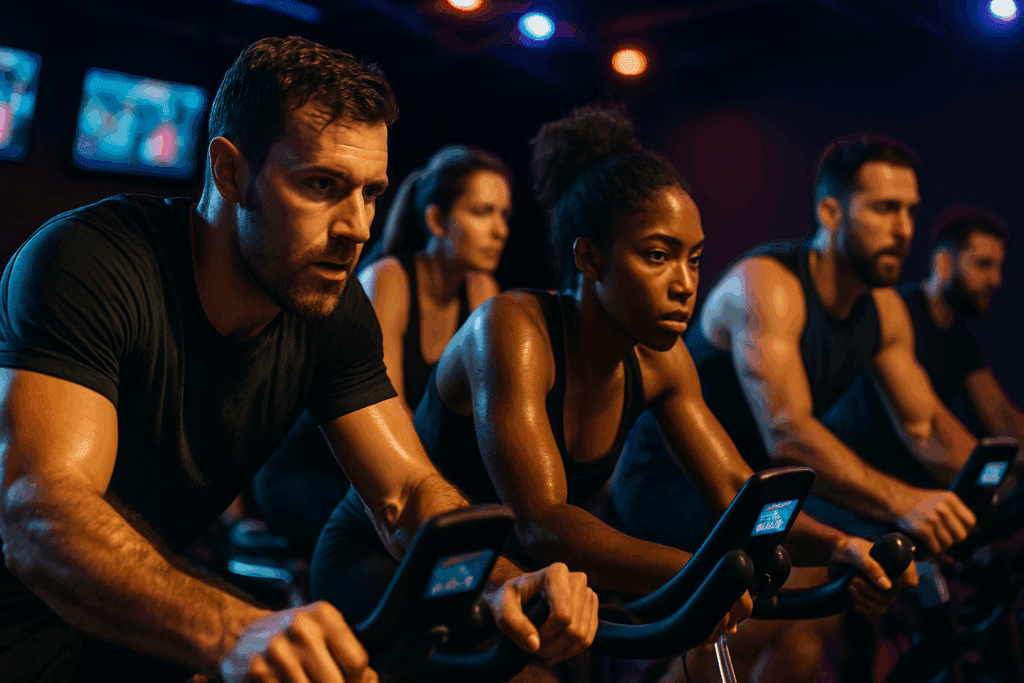
Stair Climbers and Steppers: Elevating Heart Rate and Muscular Endurance
Stair climbers and step machines simulate the act of climbing stairs, an activity known for its cardiovascular challenge and lower-body strengthening benefits. These machines are often underestimated, but they can significantly enhance muscular endurance in the quadriceps, hamstrings, glutes, and calves—key muscle groups for both athletic performance and everyday function.
Because stair climbers require constant leg engagement and core stabilization, they are particularly effective for building functional stamina. Unlike seated machines, stair climbers demand balance, posture control, and continuous motion, making them highly effective for cardiovascular and muscular co-training.
Including stair climbing exercises in a gym cardio workout plan adds variety and intensity, especially when alternating between speed climbs and recovery-paced steps. Moreover, users can adjust machine resistance to simulate steeper inclines, increasing muscular engagement and cardiovascular output without the risk of joint impact seen in plyometric workouts. Regular use improves heart efficiency, promotes bone density, and enhances coordination—a trifecta for comprehensive endurance training.
Spin Bikes: Pedal-Powered Performance and Customization
Spin bikes have surged in popularity due to their ability to offer highly customizable, immersive cardio sessions. Unlike traditional upright bicycles, spin bikes allow for greater adjustment in seat height, handlebar position, and resistance, creating a personalized experience that can replicate everything from flat road rides to steep mountain climbs.
Cardio machine exercises performed on a spin bike are ideal for those looking to increase cardiovascular output without stressing the joints. High-intensity interval training (HIIT) sessions on the bike can dramatically improve VO2 max, while long-distance simulations help develop aerobic base capacity. These benefits are critical for athletes across disciplines, from triathletes to sprinters and endurance cyclists.
Music-driven spin classes and virtual training programs add a layer of motivation and structure, enabling users to push harder than they might on their own. Data tracking features such as cadence, power output, and RPM (revolutions per minute) make it easier to quantify progress and set realistic performance benchmarks. In a well-rounded gym cardio workout plan, spin bikes serve as both a standalone tool and a complementary piece in a broader training mosaic.
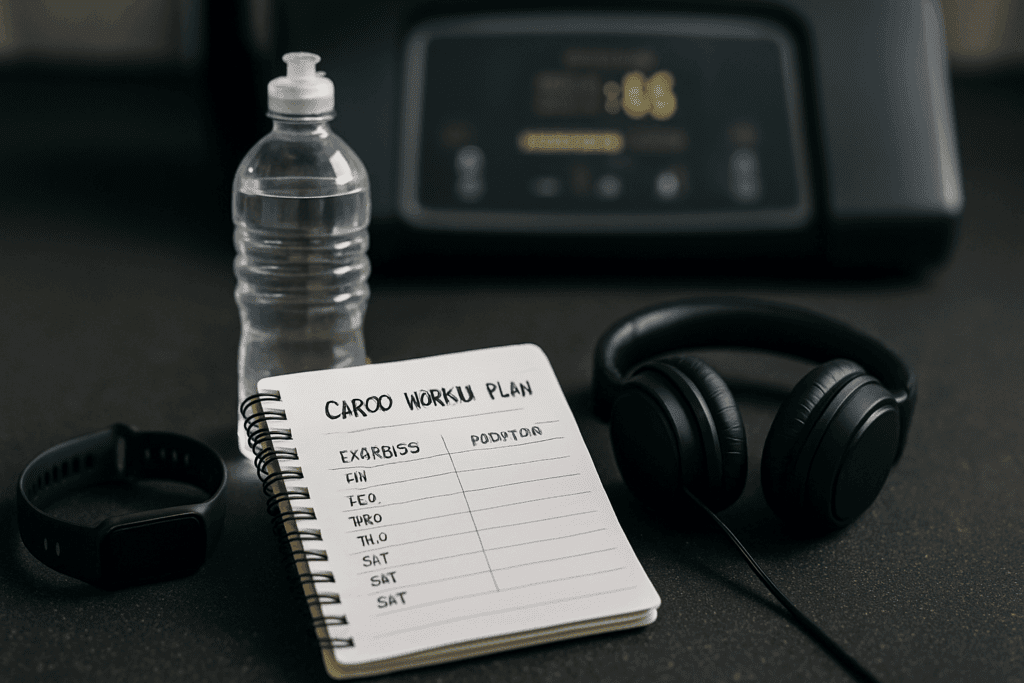
Structuring an Effective Gym Cardio Workout Plan
Creating a sustainable, effective gym cardio workout plan requires more than randomly selecting machines and hoping for results. It involves strategic programming, progression, and intentional recovery. A strong foundation begins with assessing individual goals, current fitness level, and time availability. Once these factors are defined, workouts can be structured around frequency, intensity, type, and time (the FITT principle).
For beginners or those returning to fitness, starting with three sessions per week focused on moderate-intensity steady-state (MISS) training is advisable. This might involve 30-45 minutes on a treadmill, elliptical, or spin bike at a consistent pace. As endurance builds, incorporating high-intensity intervals, machine circuits, or cross-training becomes valuable for preventing plateaus and maintaining motivation.
Intermediate and advanced individuals benefit from periodized plans that alternate between high and low-intensity days. For instance, Monday might feature rowing sprints, Wednesday could involve a longer elliptical session, and Friday might focus on stair climber intervals. Rotating among different cardio machine exercises not only reduces the risk of overuse injuries but also keeps the training experience dynamic and enjoyable.
Tracking metrics such as heart rate zones, perceived exertion, and time-to-fatigue provides actionable insights that inform training adjustments. Recovery days, which may involve light walking, stretching, or active rest, are essential for muscle repair and adaptation.
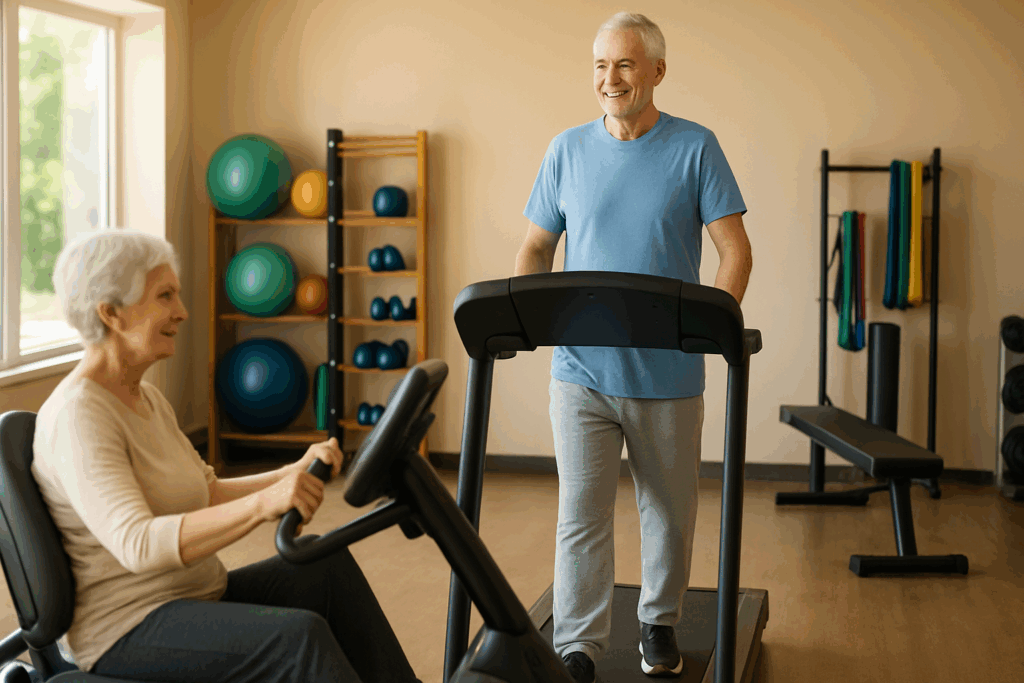
Injury Prevention and Long-Term Sustainability
One of the chief advantages of cardio machine exercises is their low-impact nature, which significantly reduces the risk of musculoskeletal injury. Unlike road running or outdoor sports that often subject joints to repeated strain, machines allow for controlled movement within a safe range of motion. This makes them especially valuable for older adults, individuals with previous injuries, or anyone seeking sustainable long-term exercise solutions.
Maintaining proper form, avoiding overtraining, and incorporating adequate warm-ups and cool-downs are essential components of injury prevention. Additionally, using the machine’s features—such as resistance settings, interval timers, and ergonomic adjustments—ensures that workouts are both safe and effective. Listening to the body, recognizing fatigue, and modifying the gym cardio workout plan as needed can make the difference between progress and burnout.
Hydration, nutrition, and sleep also play critical roles in endurance development and recovery. Ensuring these foundational pillars are addressed allows the benefits of cardio training to be fully realized, supporting not only performance enhancement but also overall well-being.
Frequently Asked Questions: Cardio Machine Exercises and Gym Cardio Workout Plans
1. How can I prevent mental fatigue when using cardio machines regularly? Mental fatigue during repetitive cardio machine exercises is more common than many realize. One effective strategy is to integrate immersive distractions, such as music playlists, audiobooks, or guided virtual workout classes. Some fitness centers now feature machines with screens that simulate outdoor landscapes or provide gamified experiences, helping to keep users mentally engaged. Another approach is to vary your routine within your gym cardio workout plan by rotating machines, changing intensity, or shifting from endurance-focused to interval-based sessions weekly. Diversifying the sensory and physical experience prevents boredom, improves adherence, and enhances both mental and physical resilience.
2. What’s the best way to monitor progress beyond tracking calories burned? While calorie count is often emphasized, a more holistic way to evaluate the success of your gym cardio workout plan is by monitoring changes in your cardiovascular markers and functional performance. Track your resting heart rate, recovery time post-exercise, and your perceived exertion levels during comparable cardio machine exercises. Fitness trackers and smartwatches can provide insights into VO2 max improvements and heart rate variability, both of which are strong indicators of cardiovascular endurance. Additionally, keeping a workout journal noting energy levels, sleep quality, and how your body feels post-workout can help you identify trends that matter far more than calories alone.
3. How do cardio machines support performance goals for non-endurance athletes like powerlifters or sprinters? Cardio machine exercises can enhance recovery, build aerobic capacity, and improve work capacity even for athletes whose primary goals aren’t endurance-based. For example, powerlifters can benefit from low-intensity steady-state (LISS) cycling to enhance blood flow, accelerate recovery, and improve conditioning between lifting sessions. Sprinters may use high-intensity interval training (HIIT) on the treadmill or rowing machine to simulate race-like intensity under controlled conditions. When strategically inserted into a gym cardio workout plan, these sessions enhance metabolic efficiency, reduce fatigue during repeated efforts, and support overall athletic longevity without compromising strength gains.
4. Can cardio machine workouts be effective for people with mobility limitations or chronic pain? Yes, cardio machine exercises can be adapted to support individuals with limited mobility or chronic pain conditions. Recumbent bikes and arm ergometers, for example, offer cardiovascular benefits without placing excessive stress on the lower body. Pool-based machines and aquatic treadmills are also emerging technologies that combine buoyancy and resistance to reduce joint impact. Within a tailored gym cardio workout plan, these low-impact options can be paired with supervised strength and flexibility exercises to safely promote cardiovascular health. Consulting a physical therapist or exercise physiologist ensures proper form and intensity based on your condition.
5. What role does nutrition play in optimizing performance during machine-based cardio sessions? Nutrition is crucial in supporting both performance and recovery in machine-based cardio workouts. For sustained endurance sessions, consuming complex carbohydrates 60 to 90 minutes beforehand provides a steady energy source. For high-intensity intervals, pairing carbs with a small amount of protein may improve output and reduce muscle breakdown. Post-workout, a combination of lean protein and carbohydrates aids in muscle repair and glycogen replenishment. Incorporating proper hydration and electrolytes is also essential, especially for prolonged or sweat-heavy sessions on machines like the stair climber or rowing erg. When aligned with a consistent gym cardio workout plan, nutrition becomes a powerful performance-enhancing tool.
6. How can I use cardio machines to improve metabolic flexibility? Metabolic flexibility refers to the body’s ability to switch efficiently between burning fat and carbohydrates for fuel. Cardio machine exercises can improve this adaptability when used in a structured and varied approach. For instance, fasted steady-state cardio on an elliptical in the morning may promote fat oxidation, while high-intensity evening sessions on a spin bike may rely more on carbohydrate metabolism. Alternating intensity and timing in your gym cardio workout plan trains the body to utilize energy sources more efficiently, potentially improving overall health and athletic performance. It’s an advanced strategy, but when executed correctly, it boosts endurance and supports metabolic health.
7. What emerging technologies are enhancing cardio machine workouts? Recent advancements in fitness technology are revolutionizing cardio machine exercises. Many machines now integrate AI-powered feedback, real-time biometric monitoring, and virtual coaching platforms that adapt workouts based on performance data. For example, smart treadmills can auto-adjust speed and incline according to heart rate zones, while rowing machines may simulate resistance patterns similar to open-water conditions. These innovations bring a new dimension to any gym cardio workout plan by creating tailored, data-informed experiences that promote engagement and safety. As these technologies become more accessible, expect increasingly personalized training pathways that mimic elite athlete protocols.
8. How can I structure a gym cardio workout plan to minimize overtraining while maximizing endurance? Overtraining is a common pitfall, especially when enthusiasm overtakes strategy. To avoid this, structure your gym cardio workout plan with built-in variability and recovery. Use a periodization model, alternating weeks of high intensity with deload weeks of moderate effort. Incorporate different cardio machine exercises on alternate days to reduce repetitive strain on joints and muscles. Active recovery days, such as light elliptical or rowing sessions at low resistance, allow the cardiovascular system to maintain adaptability without compounding fatigue. Monitoring heart rate variability and mood can also signal when adjustments are necessary to prevent overreaching.
9. Are there psychological benefits unique to machine-based cardio versus outdoor workouts? Cardio machine exercises offer unique psychological advantages, particularly for individuals who thrive in structured environments. The predictability and controllable settings reduce performance anxiety for beginners or those recovering from injury. Additionally, the data-driven feedback from machines provides measurable success markers, which can enhance motivation and self-efficacy. While outdoor training may offer more natural stimulation, the consistent metrics of a gym cardio workout plan create a tangible sense of progress. For many, this predictability fosters a sense of control, routine, and accomplishment—all of which support mental well-being and adherence.
10. How can I maintain long-term motivation and consistency with cardio machines? Sustaining motivation with cardio machine exercises often hinges on goal setting, variation, and community engagement. Rather than repeating the same routine, switch up the duration, resistance, and types of machines every few weeks. Set specific, measurable goals—such as increasing time in a target heart rate zone or shaving seconds off a virtual race challenge. Participating in gym challenges, virtual races, or group classes that align with your gym cardio workout plan can provide social accountability. Finally, regularly revisiting your “why”—be it health, performance, or stress relief—helps maintain intrinsic motivation and long-term commitment to cardiovascular training.
Maximizing Endurance and Performance with Cardio Machines: Final Reflections
In a fitness landscape teeming with trends, gadgets, and competing philosophies, cardio machine exercises remain a time-tested, scientifically validated cornerstone of endurance training. Their adaptability, precision, and accessibility make them indispensable tools for athletes, fitness enthusiasts, and everyday individuals alike. By structuring a thoughtful gym cardio workout plan, users can tap into the full potential of these machines to improve heart health, muscular stamina, and mental resilience.
Whether your goal is to cross the finish line faster, feel more energized throughout the day, or simply maintain long-term physical vitality, cardio machines provide a path to sustainable progress. From the rhythmic pull of the rowing machine to the uphill challenge of the stair climber, each machine offers unique benefits that, when harnessed effectively, can elevate your endurance training to the next level.
Endurance is not built in a day, nor is it the result of a single workout. It is the product of consistent effort, strategic planning, and a willingness to embrace the challenge. With the right approach and the power of cardio machines at your disposal, optimizing your gym cardio workout plan becomes not just possible, but inevitable.
Was this article helpful? Don’t let it stop with you. Share it right now with someone who needs to see it—whether it’s a friend, a colleague, or your whole network. And if staying ahead on this topic matters to you, subscribe to this publication for the most up-to-date information. You’ll get the latest insights delivered straight to you—no searching, no missing out.
Further Reading:
10 Aerobic Exercise Examples: How to, Benefits, and More

